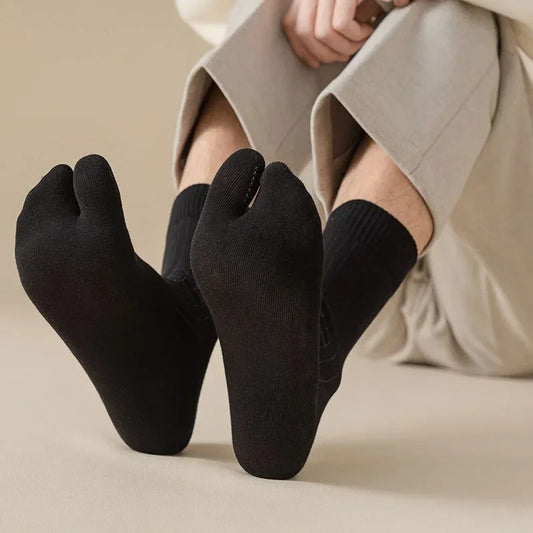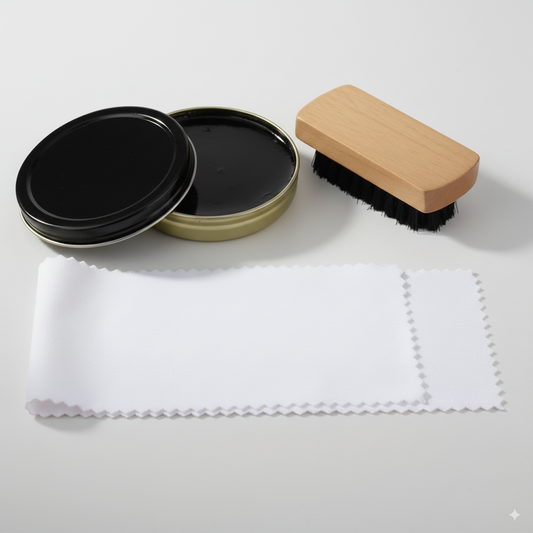Tabi History: From Japanese Origins to Fashion Icon
The story of Tabi shoes is a fascinating journey through the centuries, connecting ancient Japanese traditions with the runways of contemporary haute couture. These uniquely shaped shoes, recognizable by the separation of the big toe, embody a remarkable cultural evolution: once a functional accessory of medieval Japan, they have become a symbol of modernity and avant-garde fashion on the international stage. This transformation showcases the extraordinary ability of a traditional object to transcend time and borders, highlighting how Japanese craftsmanship has captured the global fashion imagination.
Origins of Tabi: Between Tradition and Japanese Culture
Birth of Tabi in Medieval Japan
The earliest records of Tabi date back to the 8th century during the Nara period (710–794), where they emerged as an essential element of traditional Japanese attire. At the time, Japan was developing a refined clothing culture, influenced by exchanges with China and Korea, yet adapted to the unique climate and social structure of the archipelago. Tabi arose from the need to adapt the foot to traditional sandals, striking a perfect balance between functionality and aesthetics.
These new types of socks were rooted in a deep cultural logic: in medieval Japanese society, where people often removed their shoes indoors, the feet held special significance. Tabi provided protection and dignity while adhering to social norms. Their design reflected an intuitive understanding of foot anatomy—anticipating Western discoveries by centuries about the importance of toe freedom.
The distinctive split between the big toe and the other toes was no accident. It stemmed from close observation of natural foot biomechanics, improving grip and optimizing balance when worn with traditional geta or zori sandals.
The Evolution of Materials: From Leather to Cotton
The materials used in Tabi reflect the technological and social evolution of Japan. Initially crafted from leather—deerskin or buckskin, in particular—early Tabi were reserved for aristocrats and the upper class. Leather offered durable protection and some water resistance, crucial for outdoor noble activities.
The introduction of cotton in the 14th century revolutionized Tabi production. More accessible and comfortable, cotton made Tabi available to the masses. It also allowed for better breathability and easier maintenance—features especially valuable in Japan’s humid climate. This shift marked Tabi’s integration into daily life, transcending class barriers.
Over time, Japanese artisans refined the manufacturing process. Silk was introduced for ceremonial Tabi, producing exceptionally delicate pieces. This diversification of materials underscored the growing importance of Tabi in Japanese dress culture.
💡 Note: Traditional cotton Tabi require special care. Hand-wash them with mild soap and air dry to preserve their signature shape and longevity.
A Sock Rooted in Ritual and Everyday Life
In traditional Japanese society, Tabi went beyond simple garments to become ritual and symbolic objects. They were worn during key social moments—tea ceremonies, weddings, religious festivals, and other ceremonial events—endowing them with sacred value that surpassed their practical use.
The ritual of changing Tabi marked social transitions. Colors and patterns varied depending on the season, age, and social status of the wearer. White Tabi, for instance, were reserved for solemn occasions, symbolizing purity and respect. This codified fashion system revealed the depth of traditional Japanese culture.
In everyday life, Tabi accompanied domestic and professional activities. Their design facilitated movement within traditional Japanese homes, where people often moved in squatting or kneeling positions. This adaptation to a specific lifestyle illustrated how clothing could reflect and support a cultural system.
From Split-Toe to Jika-Tabi
The Function of the Toe Separation
The split-toe design of Tabi addresses specific biomechanical considerations. This unique structure allows the big toe—crucial for balance and propulsion—to move independently. This freedom greatly enhances stability and proprioception, vital for physical activity and walking on uneven terrain.
The big toe, responsible for 80% of propulsion during walking, finds optimal expression through this separation. This empirical understanding of foot biomechanics highlights the wisdom of Japanese artisans, who developed a solution that intuitively respects human physiology.
The split-toe function also stimulates foot muscles. By enabling more natural toe movement, it promotes the development and maintenance of intrinsic foot strength, helping prevent common foot issues associated with conventional closed footwear.
Jika-Tabi: From Rice Fields to Construction Sites
The evolution from Tabi to Jika-Tabi marked a revolution in traditional footwear. Emerging in the early 20th century, Jika-Tabi transformed the sock into a true work shoe. This innovation met the needs of farmers and craftsmen, offering enhanced protection while preserving the benefits of toe separation.
Japan’s rice fields served as the ideal testing ground for the first Jika-Tabi. Their rubber soles provided excellent grip on muddy, slippery surfaces, while the high-top upper protected the foot and ankle from the elements. This adaptation demonstrated Japanese craftsmanship’s ability to evolve tradition to meet modern demands.
Jika-Tabi were soon adopted on construction sites, where their flexibility and grip revolutionized work practices. Japanese workers appreciated the enhanced surface feel and improved balance, essential for working at heights or on unstable ground.
💡 Note: Modern Jika-Tabi feature advanced technologies like puncture-resistant soles and reflective safety materials. Choose certified models for professional use.
Tabi as a Tool for Physical Performance
Tabi’s performance benefits quickly extended beyond the workplace into sports. Traditional Japanese martial arts adopted them for their grip and stability. Judo, karate, and aikido practitioners embraced Tabi, recognizing their role in improving balance and body awareness.
This athletic adoption highlighted the exceptional biomechanical advantages of Tabi. The split-toe design improved weight distribution and enhanced intrinsic foot muscle activation. These factors translated into better performance in disciplines requiring balance, agility, and precise movement.
Tabi also influenced running and outdoor sports. Minimalist runners discovered the benefits of this traditional shoe, which offered the feel of barefoot running with added protection. The growing popularity of Tabi among athletes worldwide attests to the universal relevance of their design.
Tabi in Contemporary Fashion
Spring–Summer 1988: The Margiela Breakthrough
On October 23, 1988, a fashion milestone occurred: Martin Margiela presented his first collection for Maison Margiela, featuring a bold reinterpretation of traditional Tabi. The show, held in an abandoned lot in Belleville, Paris, transformed Western perceptions of this Japanese footwear. Margiela elevated a utilitarian object into a fashion statement, creating a daring bridge between Eastern tradition and European avant-garde.
Margiela’s vision went beyond mere aesthetic adaptation. He instinctively understood the poetic and conceptual depth of Tabi—their power to challenge conventional ideas of beauty and function. His reinterpretation in black leather, with a Western heel and sole, created a hybrid that defied traditional expectations of women's footwear.
This foundational collection established Tabi as a symbol of Margiela’s deconstructivist ethos. They embodied his philosophy of creative repurposing, respectful cultural reappropriation, and innovation through tradition. This approach left a lasting impact on contemporary fashion, sparking countless reinterpretations.
The Cultural Impact of Tabi in Haute Couture
The integration of Tabi into haute couture sparked a true aesthetic revolution. Designers discovered in this traditional form an endless source of inspiration, reshaping Western fashion codes. This went beyond trend—it became a cultural movement, questioning ideas of exoticism and authenticity.
Top fashion houses embraced the Tabi phenomenon, each bringing their creative vision. This democratization among the fashion elite revealed Tabi’s power to transcend cultural and aesthetic boundaries. They became a universal symbol of modernity, understood and adopted by creators worldwide.
Tabi also influenced fashion photography and visual arts. Their distinctive silhouette inspired photographers, stylists, and artists, who saw them as powerful narrative elements. This artistic dimension contributed to their iconic status, elevating them beyond fashion objects to cultural symbols.
When Tradition Becomes a Global Trend
The global rise of Tabi illustrates modern cultural diffusion. Once a traditional Japanese object, they gradually became a worldwide fashion phenomenon, embraced by celebrities, influencers, and fashion lovers alike. This transformation showed fashion’s ability to reinvent and universalize cultural distinctiveness.
The Tabi’s popularity among the digital generation speaks to their resonance with modern values. They embody authenticity, originality, and tradition in an increasingly standardized world. This symbolic power explains their success among younger consumers seeking identity and uniqueness.
💡 Note: The Tabi craze has led to many counterfeits. Stick to trusted brands and check craftsmanship, especially around the signature big toe seam.
Tabification: Tabi’s Return to Everyday Life
The “tabification” trend marks the final evolution of these iconic shoes. After conquering runways and insider wardrobes, Tabi have returned to the mainstream in multiple forms. This democratization highlights their relevance to modern desires for comfort, originality, and authenticity.
The footwear industry has adapted, launching accessible collections incorporating Tabi features. Sneakers, loafers, boots, and sandals now sport the split-toe design, creating a new formal vocabulary in shoe design. This variety allows everyone to embrace the Tabi aesthetic in their own way.
Tabification also influences consumption habits. Shoppers now seek authentic products that honor tradition while meeting modern needs. This shift reflects a broader awareness of the value of artisanal heritage and the importance of preserving traditional craftsmanship.
Tabi’s future looks bright, championed by a generation mindful of cultural legacy and eager for originality. Their story—from rice fields to global catwalks—perfectly illustrates how a traditional item can cross time and cultures, proving that authenticity and innovation can coexist. This fusion of past and future opens new creative possibilities, promising exciting new chapters in the ongoing story of Tabi.


